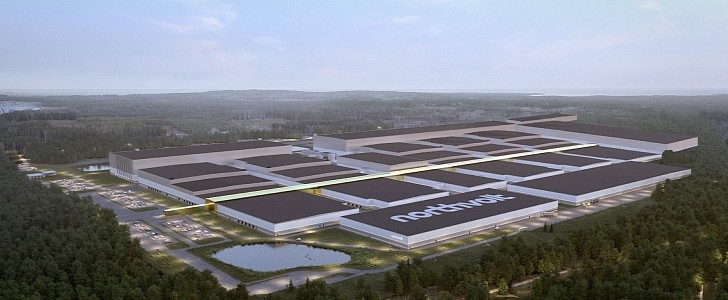Volkswagen already presented how important Northvolt is for its electric car plans. The Swedish battery manufacturer will be in charge of the group’s cells for premium vehicles. At Volkswagen Power Day, the idea was that its Skellefteå plant would make 40 GWh per year in cells. Still, the German carmaker just invested €500 million ($620 million) for it actually to reach an annual production of 60 GWh.
The total investment in Northvolt was $2.75 billion. Volkswagen has a 20% stake in Northvolt, and the funds kept it just like that. Interestingly, the production increase will still ensure the German carmaker the same 40 GWh output it had revealed at the Volkswagen Power Day. That leads us to believe the additional 20 GWh represents the contracts Northvolt has with other companies.
Both companies plan to have sustainable battery production. Doing that is something Volkswagen also disclosed when it informed it is part of the “Responsible Lithium Partnership” with BASF, Daimler, and Fairphone in Chile. This alliance plans to make lithium extraction in the Salar de Atacama deal with water supplies more responsibly.
Chilean farmers and other people there are concerned with what lithium exploration is doing with the water supplies in the region. BBC already wrote about how lithium mining there is affecting the local population and the environment. Some farmers had to leave their lands due to water shortages, which were already difficult to handle before lithium-ion batteries were so crucial.
These companies have hired GIZ GmbH (Deutsche Gesellschaft für Internationale Zusammenarbeit, or German Society for International Cooperation) to coordinate a multi-stakeholder platform involving civil society groups – such as indigenous communities – mining companies, government institutions, and all people engaged with the impacts of lithium extraction.
The idea would not be to facilitate getting the metal or any other raw material there but rather to improve natural resource management so that all parties are satisfied with the outcomes. The project has started this spring and is planned to last 2.5 years.
Both companies plan to have sustainable battery production. Doing that is something Volkswagen also disclosed when it informed it is part of the “Responsible Lithium Partnership” with BASF, Daimler, and Fairphone in Chile. This alliance plans to make lithium extraction in the Salar de Atacama deal with water supplies more responsibly.
Chilean farmers and other people there are concerned with what lithium exploration is doing with the water supplies in the region. BBC already wrote about how lithium mining there is affecting the local population and the environment. Some farmers had to leave their lands due to water shortages, which were already difficult to handle before lithium-ion batteries were so crucial.
These companies have hired GIZ GmbH (Deutsche Gesellschaft für Internationale Zusammenarbeit, or German Society for International Cooperation) to coordinate a multi-stakeholder platform involving civil society groups – such as indigenous communities – mining companies, government institutions, and all people engaged with the impacts of lithium extraction.
The idea would not be to facilitate getting the metal or any other raw material there but rather to improve natural resource management so that all parties are satisfied with the outcomes. The project has started this spring and is planned to last 2.5 years.

